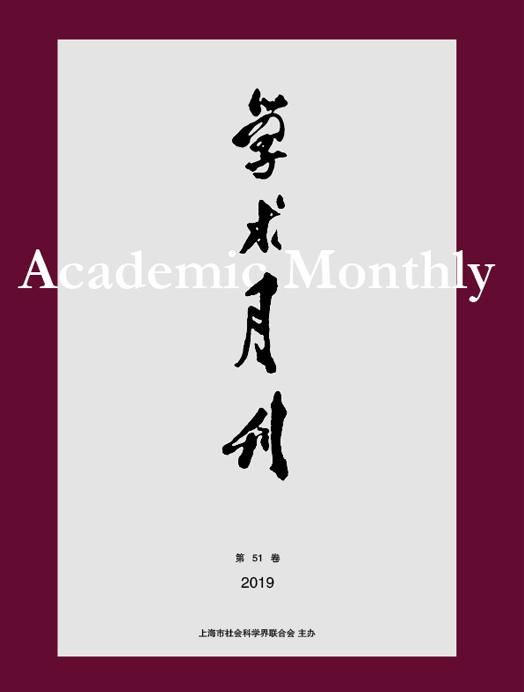Citation:
ZHU Pingfang. Targeted Poverty Alleviation and Rural Labor Mobility:Policy Treatment Effects and Mechanisms[J]. Academic Monthly, 2024, 56(3): 70-83.

Targeted Poverty Alleviation and Rural Labor Mobility:Policy Treatment Effects and Mechanisms
-
Abstract
The key to effectively connecting Targeted Poverty Alleviation(TPA) and rural revitalization lies in ensuring the free flowing of rural labor.Building on a theoretical analysis of the inherent mechanisms of household labor mobility,this paper constructs a time-varying DID model to systematically examine the impact of TPA on rural labor mobility,eliminating interference from the population migrating based on household registration.The study reveals that TPA significantly boosts the proportion of rural households engaged in off-farm work,with a primary focus on promoting mobility within the same county.An analysis of the precision targeting and impact pathways demonstrates the following: for households with low human capital,TPA increases non-agricultural employment opportunities through public services and employment transfer policies,thereby promoting household labor mobility; for households involved in agricultural production,TPA stimulates farmers to expand production through infrastructure and agricultural development policies.However,constrained by the current level of agricultural technology,improvements in agricultural production conditions provide material support for labor mobility; for households with a high proportion of members lacking labor capacity,TPA reduces household spending on healthcare and education through public services and social safety net policies,mitigating the hidden constraints on labor mobility arising from household factors.This paper contends that labor mobility provides a more accurate assessment of the sustainable effects of TPA,offering practical significance for promoting the seamless integration of poverty-stricken areas into comprehensive rural revitalization.
-

-
References
-
Access
-
-
[1]
. . Academic Monthly,
2016, 48(11): 95-107.
-
[2]
Shiyi CHEN
, Chaoliang LIU
, Hao JIN
. Environmental Regulation, Labor Allocation and High-Quality Urban Development. Academic Monthly,
2022, 54(2): 48-62.
-
[3]
Zhiyang LIU
, Bin LI
, Hewu CHEN
. Social Entrepreneurship and Rural Revitalization. Academic Monthly,
2018, 50(11): 77-88.
-
[4]
LI Jingkui
. Labor Contract Law,Enterprise Boundary and New Labor Dual Market. Academic Monthly,
2023, 55(8): 61-79.
-
[5]
,
. . Academic Monthly,
2016, 48(12): 75-85.
-
[6]
,
. . Academic Monthly,
2017, 49(07): 58-67.
-
[7]
. . Academic Monthly,
2018, 50(01): 85-95.
-
[8]
Jie CHEN
, Xiaoxin GUO
, Shihu ZHONG
. Spatial and Temporal Characteristics of Discrimination against Rural Household in China’s Urban Migrant Labour Market and Its Influencing Factors. Academic Monthly,
2022, 54(7): 53-69.
-
[9]
Zhongwei SUN
, Linping LIU
. From “Surplus Labor” to “New Urban Immigrants”: Reflections on the Problems and Research of Migrant Workers for 40 Years. Academic Monthly,
2018, 50(11): 54-67.
-
[10]
Jian SU
. The Theoretical Logic, Empirical Support and Realization Path of Language for Poverty Alleviation. Academic Monthly,
2020, 52(9): 67-73.
-
[11]
. . Academic Monthly,
2016, 48(09): 99-109.
-
[12]
Xuefeng HE
, Hua GUI
. Administrative Incentives and the Logic of Rural Governance. Academic Monthly,
2022, 54(7): 126-137.
-
[13]
Chunguang WANG
. Rural Non-Employment Income and the Possible Future Picture of Chinese Rural Modernization. Academic Monthly,
2022, 54(12): 128-140.
-
[14]
Lei ZHAO
. “Labor Determines Value” Is the Result of Labor Alienation. Academic Monthly,
2019, 51(12): 51-59.
-
[15]
Zuhui HUANG
. Strategic Orientation and Five Key Points of “Relocation” Poverty Alleviation Strategy in the New Stage. Academic Monthly,
2020, 52(9): 48-53.
-
[16]
Xiaoyan YUAN
, Lei SHI
. Intergenerational Income Elasticy and Regional Difference. Academic Monthly,
2021, 53(4): 66-80.
-
[17]
Jiming CAI
, Yueyang CAO
, Leyi LIU
. On Labour-Commanded and Labour-Embodied in Value Determination and Their Relation. Academic Monthly,
2022, 54(6): 61-72.
-
[18]
. . Academic Monthly,
2016, 48(05): 63-71.
-
[19]
,
. . Academic Monthly,
2016, 48(07): 79-88.
-
[20]
YUAN Xiaoyan
. City Size,Service Development and Female Migrants Employment. Academic Monthly,
2023, 55(9): 58-67.
-
-



 沪公网安备 31010102003103号
沪公网安备 31010102003103号 DownLoad:
DownLoad: